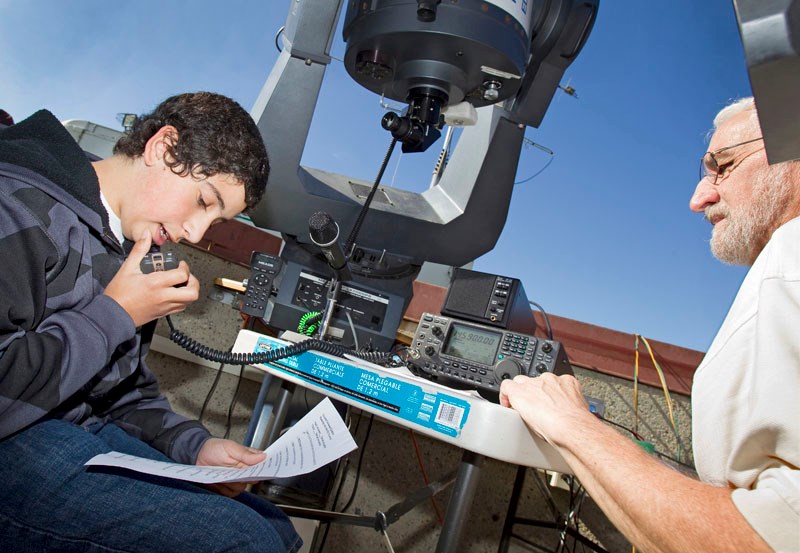If you want to know what kind of lifestyle to expect if you're ever in space, what better way to find out than to ask someone who's living it right now?
That's what St. Albert student Vincent Lew, 13, did Wednesday morning when his turn came to speak to astronaut Mike Fossum, who's stationed on the International Space Station. Lew was one of three St. Albert students among a group of 16 young people who got radio time with Fossum at the Telus World of Science in Edmonton.
Fossum, a 53-year-old mechanical engineer from Texas, replied to Lew's lifestyle question by saying he and his colleagues are busy from the moment they wake up until they go to bed.
"That's OK because, really, all we have up here is work, each other and sometimes looking at the stars or looking out the window," Fossum said.
The chance to talk to a live NASA astronaut was part of the University of Alberta's summer space academy for students in grades 7 to 9.
"It was really interesting talking to a real astronaut," Lew said. "I've read a lot but this time we're actually talking to a real person who's actually had experience with this. Pretty cool."
Evan Gamble and Liam Kachkar were the other local boys who got turns at the mic. All three are bound for Grade 8 at Sir George Simpson Junior High School in September.
Gamble had the most existential question of the session, asking how living on the space station has influenced how Fossum acts or thinks "about Earth and humanity."
"Wonderful question, Evan," Fossum said. "From here, you see the world as really one place . you don't see those coloured lines that we see on maps.
"It really makes me think of the world as a smaller place with less divisions rather than more."
Gamble also asked Fossum's opinion of the private space industry, to which Fossum replied that private industry is involved more than was ever foreseen and will produce the next generation of spacecraft.
Afterward, Gamble said the session is something he's wanted to experience since he saw a video link of such an exchange when he was in Grade 6.
"I was pretty satisfied. We got to talk to an astronaut and he answered my questions in the way that I thought he could and should have," Gamble said. "It's kind of humanizing because we realize they aren't just robots up there. They're humans."
Other participants wondered about career prospects, future missions to Mars and working in zero gravity.
"The hardest thing about lack of gravity is really trying to work with stuff," Fossum said. "When you reach in a bag full of things to find a certain one, it's hard to control all the other ones because they start bouncing and moving around."
Kachkar, 12, was impressed with Fossum's answers.
"I didn't expect that much detail. I thought it may be just a few sentences, not going on and on, so it was pretty cool," he said.
The question-and-answer session lasted just 10 minutes, because that's how long it takes for the space station to travel from horizon to horizon. The linkup didn't involve any satellites but was achieved with a station-to-station radio signal.
"This is what everybody wants," said organizer Brian Jackson. "It's the nostalgia behind it. It's the fact that we talk directly to the station."
Jackson is an Airdrie schoolteacher who volunteers with an organization called Amateur Radio on the International Space Station. His role is to find opportunities for Alberta youth to connect with astronauts on the space station.
"This is a unique opportunity that very few kids ever get a chance to do," Jackson said. "It's something that they'll always remember."
SPACE STATION FACTS
• travels through space at about 23,000 km/h
• orbits Earth once every 90 minutes or 16 times a day
• is about 354 km from Earth
• is about the size of an American football field (including solar arrays)
• has more liveable space than a five-bedroom house




